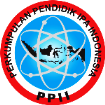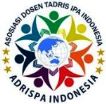Needs Analysis and Innovative Implementation of Virtual Reality Learning Media Development for Earth and Solar System Topics
Abstract
This study aims to examine the necessity of virtual reality (VR)-based learning media for teaching Earth and Solar System content at the junior high school level. The central issue addressed is the development of innovative educational tools that incorporate VR technology to facilitate the learning of abstract scientific concepts. A quantitative approach employing a survey method was utilized, involving 80 seventh-grade students from SMP Negeri 4 Pekanbaru. Participants were selected through convenience sampling based on availability. Data were gathered using an online questionnaire distributed via Google Forms over a two-week period and analyzed descriptively. Findings revealed that 56% of students experienced difficulties in comprehending Earth and Solar System material due to its abstract nature. Furthermore, 92% expressed a strong need for learning media capable of transforming abstract content into concrete visual representations to enhance conceptual understanding. These results underscore a significant demand for VR-based instructional media in science education, particularly in topics requiring high levels of visualization. The study implies that integrating virtual reality into the classroom could effectively address existing learning barriers, increase student engagement, and support the development of a deeper understanding of scientific phenomena through immersive technological experiences.
Keywords: learning media, earth, solar system, virtual reality,
Full Text:
PDFReferences
Agustian, N., & Salsabila, U. H. (2021). Peran Teknologi Pendidikan dalam Pembelajaran. Islamika, 3(1), 123–133. https://doi.org/10.36088/islamika.v3i1.1047
Anthes, C., García-Hernández, R. J., Wiedemann, M., & Kranzlmüller, D. (2016). State of the art of virtual reality technology. IEEE Aerospace Conference Proceedings, 2016-June. https://doi.org/10.1109/AERO.2016.7500674
Darojat, M. A., Ulfa, S., & Wedi, A. (2022). Pengembangan Virtual Reality sebagai Media Pembelajaran Sistem Tata Surya. JKTP: Jurnal Kajian Teknologi Pendidikan, 5(1), 91–99. https://doi.org/10.17977/um038v5i12022p091
Fauzan, M., Gani, A., & Syukri, M. (2017). Penerapan Model Problem Based Learning Pada Pembelajaran Materi Sistem Tata Surya Untuk Meningkatkan Hasil Belajar Siswa. Jurnal Pendidikan Sains Indonesia, 05(01), 27–35. http://jurnal.unsyiah.ac.id/jpsi
Fauziah, A. N., & Sulisworo, D. (2022). Pembelajaran Fisika dengan Memanfaatkan Teknologi Guna Meningkatkan Minat Belajar. Jurnal Genesis Indonesia, 1(02), 79–86. https://doi.org/10.56741/jgi.v1i02.93
Huda, I. A. (2020). Perkembangan Teknologi Informasi dan Komunikasi (Tik) Terhadap Kualitas Pembelajaran Di Sekolah Dasar. Jurnal Pendidikan Dan Konseling (JPDK), 2(1), 121–125. https://doi.org/10.31004/jpdk.v1i2.622
Jaya, H. (2013). Pengembangan laboratorium Virtual untuk Kegiatan Paraktikum dan Memfasilitasi Pendidikan Karakter di SMK. Jurnal Pendidikan Vokasi, 2(1), 81–90. https://doi.org/10.21831/jpv.v2i1.1019
Latip, A. (2022). Penerapan Model Addie dalam Pengembangan Multimedia Pembelajaran Berbasis Literasi Sains. DIKSAINS : Jurnal Ilmiah Pendidikan Sains, 2(2), 102–108. https://doi.org/10.33369/diksains.2.2.102-108
Nor, M., & Halim, L. (2021). Analysis of Physics Learning Media Needs Based on Mobile Augmented Reality ( AR ) on Global Warming For High School Students. Journal of Physics: Conference Series PAPER, 2126. https://doi.org/10.1088/1742-6596/2126/1/012009
Pratiwi, P. H., Hidayah, N., & Martiana, A. (2017). Pengembangan Modul Mata Kuliah Penilaian Pembelajaran Sosiologi Berorientasi HOTS. Cakrawala Pendidikan, (2), 85339.
Purwati, Y., Sagita, S., Utomo, F. S., & Baihaqi, W. M. (2020). Pengembangan Media Pembelajaran Tata Surya Berbasis Virtual Reality untuk Siswa Kelas 6 Sekolah Dasar dengan Evaluasi Kepuasan Pengguna Terhadap Elemen Multimedia. Jurnal Teknologi Informasi dan Ilmu Komputer (JTII), 259-263.
Saydah, A., Z, F., Irianti, M., & Nor, M. (2024). Validity Test and Practicality Test of Virtual Reality Based Learning Media on Optical Equipment Material. Journal of Educational Sciences, 8, 476–487.
Susliana, D., & Wahyuni, S. (2019). Pengembangan Media Pembelajaran Scrapbook untuk Meningkatkan Pemahaman Materi Struktur Bumi dan Dinamikanya. Unnes Physics Education Journal (UPEJ), 8(3), 220–227. http://journal.unnes.ac.id/sju/index.php/upej
Widianto, E. (2021). Pemanfaatan Media Pembelajaran Berbasis Teknologi Informasi. Journal of Education and Teaching, 2(2), 213. https://doi.org/10.24014/jete.v2i2.11707
DOI: http://dx.doi.org/10.24014/jnsi.v8i1.35651
Refbacks
- There are currently no refbacks.

Journal of Natural Science and Integration
E-ISSN: 2620-5092 P-ISSN: 2620-4967
Published By:
Department of Science Education, Faculty of Education and Teacher Training,
State Islamic University of Sultan Syarif Kasim Riau, Indonesia
Mailing Address:
Jl. H.R Soebrantas Km. 15 No. 155
Kelurahan Simpang Baru
Kecamatan Tuah Madani, Pekanbaru, Riau, Indonesia
Email: jnsi.tadrisipa@uin-suska.ac.id
Indexed By:
Journal of Natural Science and Integration is licensed under a Creative Commons Attribution 4.0 International License.


_-_Copyy2.png)






.jpg)
.png)
.jpg)
.jpg)




